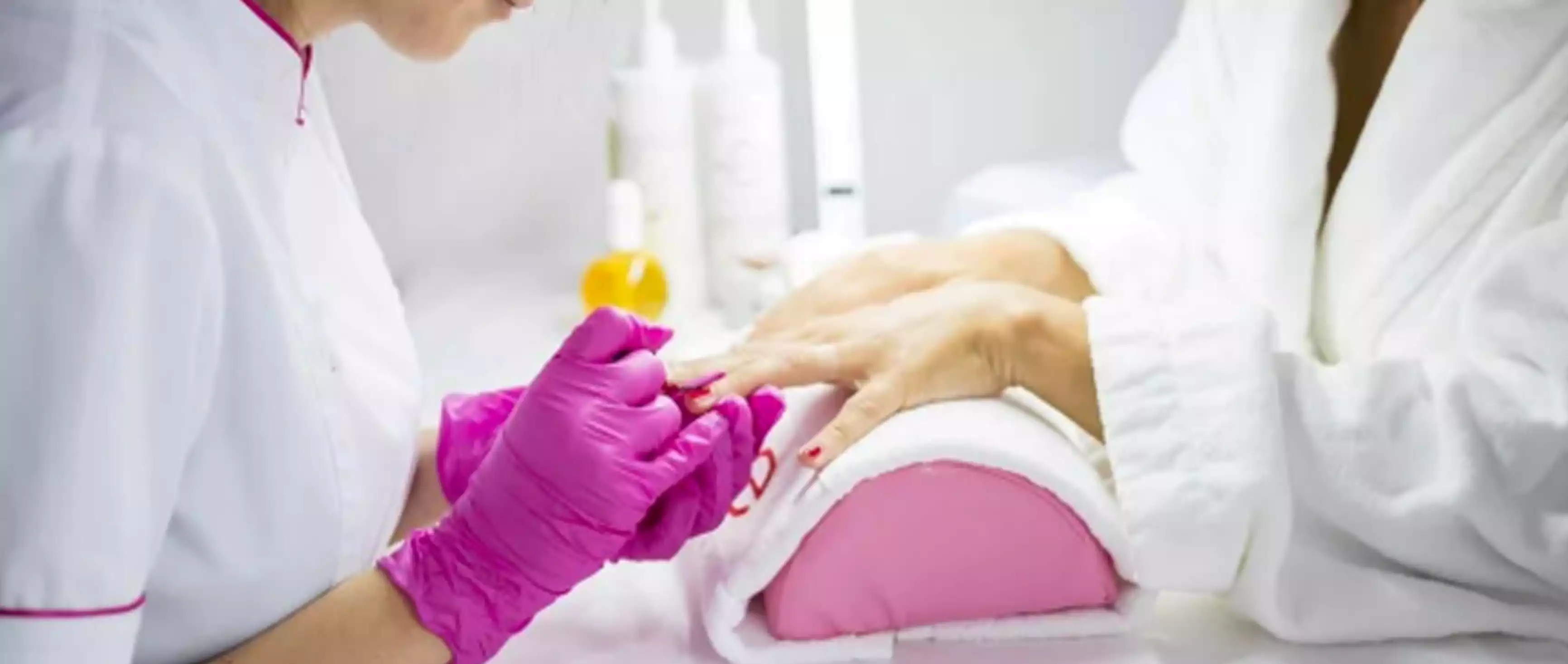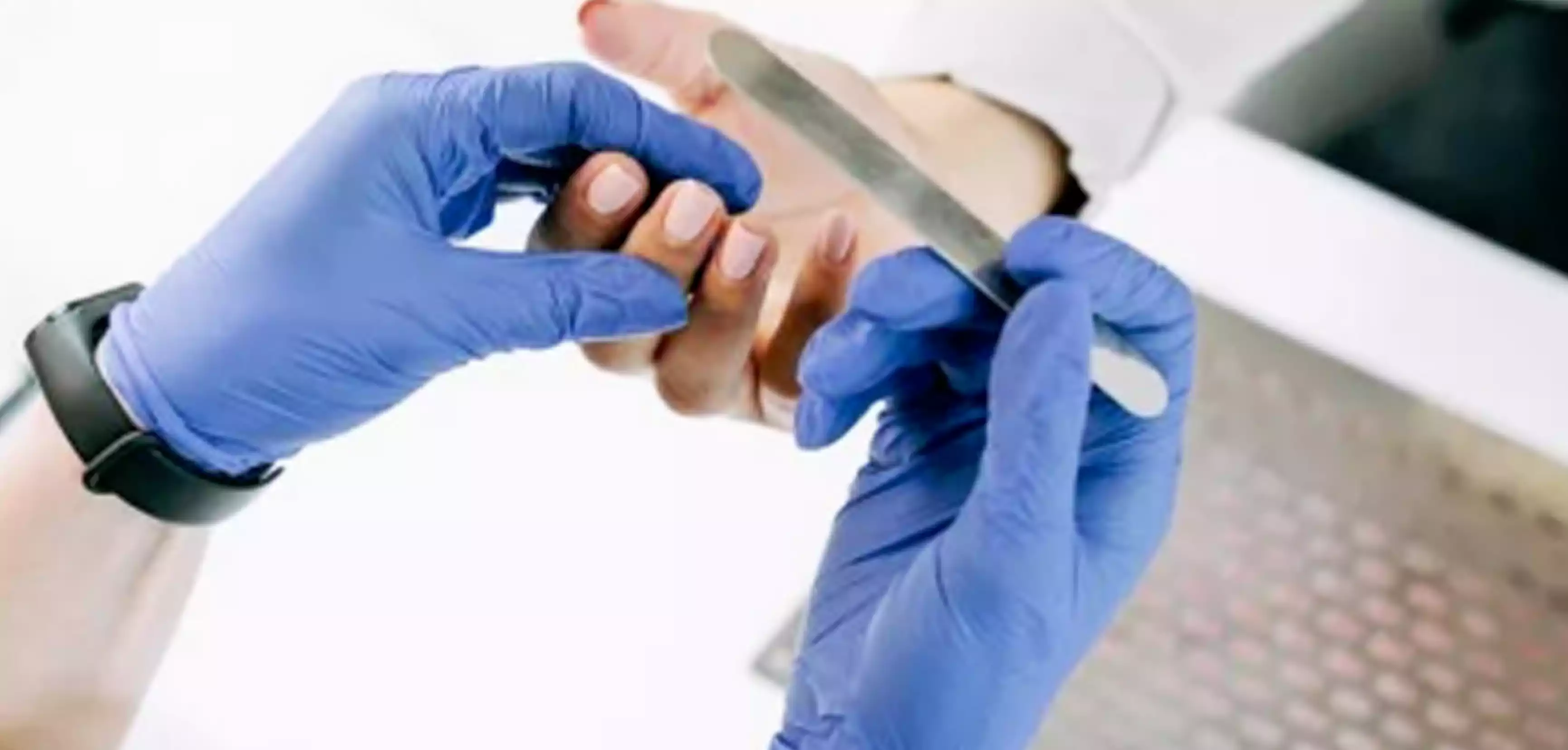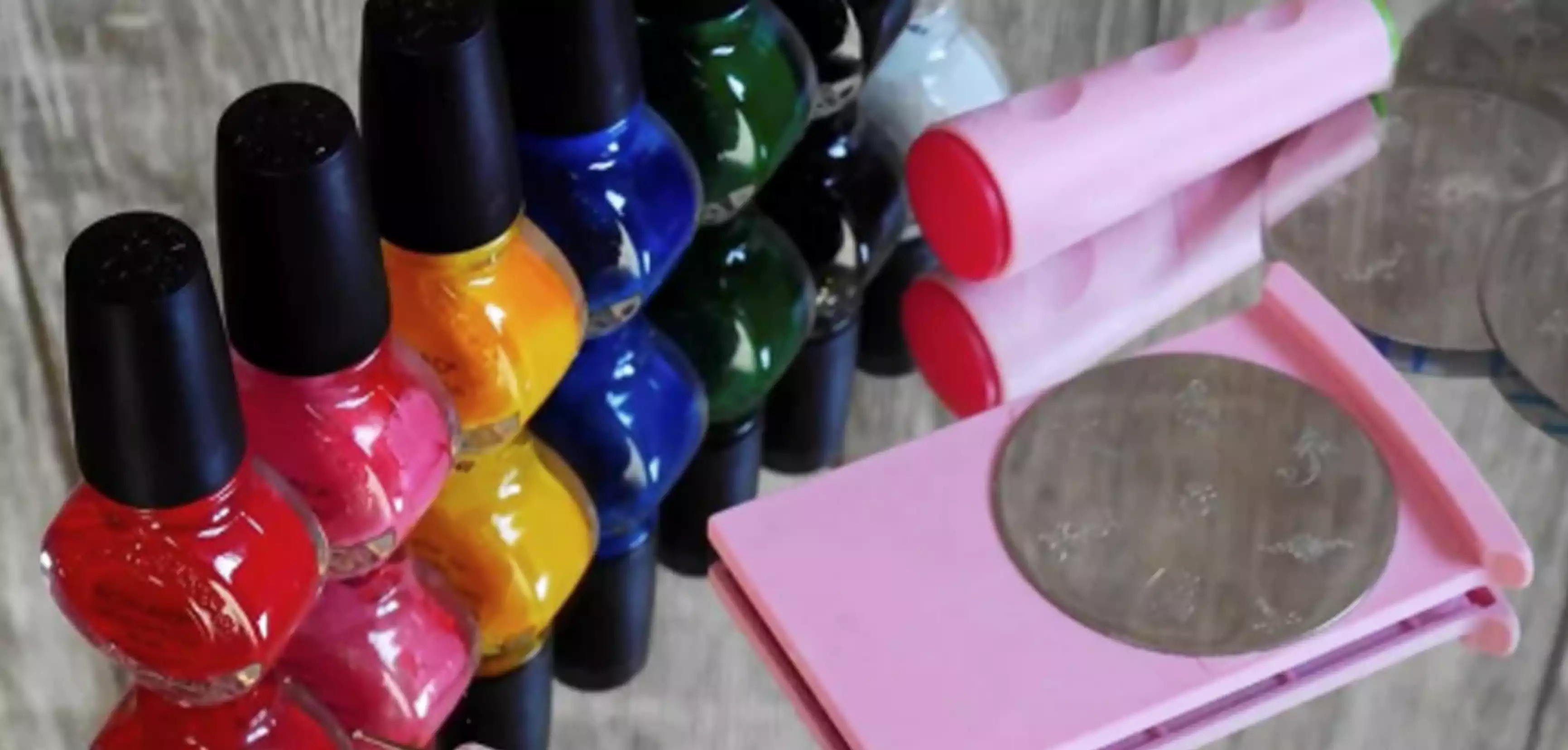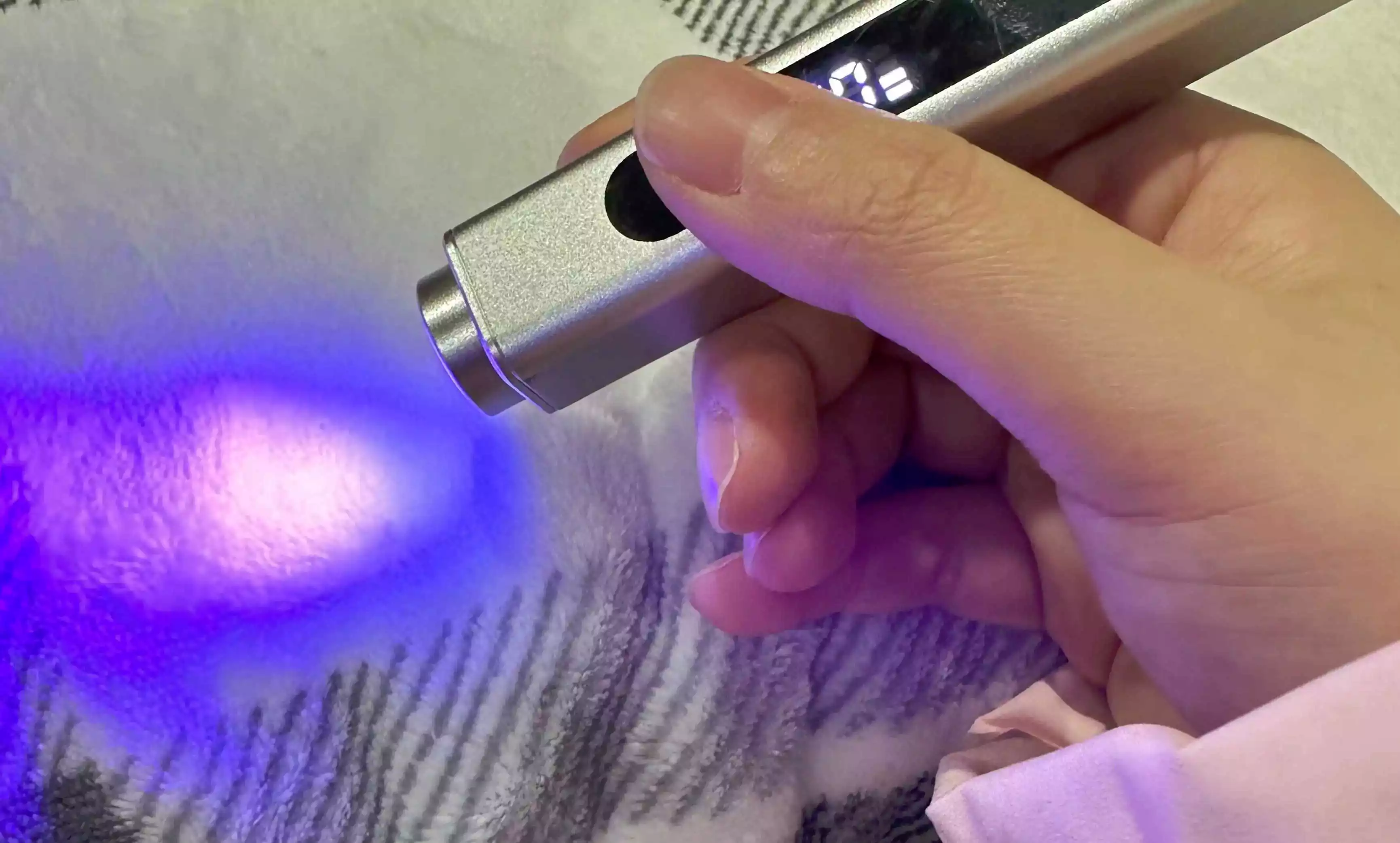Health risks of nails
Hello everyone! I’m a star employee at CHROMÉCLAIR, a brand of hematologic-free gel polish.
Manicures bring beauty to those who love beauty, and some people often switch up their styles every once in a while. But are you aware of the health risks involved?

01
Health Risks of Manicures
Manicures begin by trimming most of the nail and filing the remaining nail to remove the enamel layer on the nail surface, making it easier to paint and color it. However, while these treatments enhance the beauty of the nails, they also deprive the nails of their natural barrier protection, making them less resistant to acidic or alkaline corrosion. Frequent manicures can cause nail breakage and yellowing or blackening. Direct contact with pathogens (such as bacteria, viruses, mycoplasmas, and chlamydia) in the air, objects, and water can easily allow these microorganisms to invade the nail grooves or penetrate the fingertips through the nail surface, which has lost its enamel layer. This can cause paronychia and inflammation of the fingertip soft tissue. In severe cases, the inflammation can invade the bone marrow, leading to osteomyelitis, which.
 In order to save costs, some nail art practitioners have a serious shortage of nail art equipment, let alone disinfection and sterilization equipment (such as alcohol, iodine, sterile cotton swabs and high-pressure sterilizers, etc.). In addition, they have no awareness of sterility and do not “change and disinfect” nail art equipment for each customer. A set of nail art tools is often used repeatedly without being disinfected, which can easily spread diseases such as onychomycosis and cause bacterial infection, leading to paronychia.
In order to save costs, some nail art practitioners have a serious shortage of nail art equipment, let alone disinfection and sterilization equipment (such as alcohol, iodine, sterile cotton swabs and high-pressure sterilizers, etc.). In addition, they have no awareness of sterility and do not “change and disinfect” nail art equipment for each customer. A set of nail art tools is often used repeatedly without being disinfected, which can easily spread diseases such as onychomycosis and cause bacterial infection, leading to paronychia.

02
Health Risks of Nail Polish
The solvents used in most nail polishes are primarily phthalates and formaldehyde, followed by acetone and ethyl acetate. Excessive exposure to these substances can have varying degrees of impact on human organs and systems. For example, excessive phthalates can disrupt normal hormone balance, leading to reproductive harm and other health problems. Both benzene and formaldehyde are carcinogens. Formaldehyde is volatile and is often responsible for the pungent odor experienced when applying nail polish. The more offensive the nail polish, the higher the formaldehyde content and the greater the risk.
 Some nail polishes contain large amounts of acetone and ethyl acetate to achieve quick drying. These ingredients are highly volatile, producing a dizzying odor. Long-term inhalation can be harmful to the nervous system and respiratory mucosa.
Some nail polishes contain large amounts of acetone and ethyl acetate to achieve quick drying. These ingredients are highly volatile, producing a dizzying odor. Long-term inhalation can be harmful to the nervous system and respiratory mucosa.
Furthermore, organic solvents are highly corrosive. Prolonged or frequent use can damage the nail plate and nail bed, resulting in discoloration, brittle nails, white nails, and periungual inflammation. They can also damage the keratin layer of the nail surface, compromising the nail structure and making it more susceptible to fungal attack, leading to onychomycosis.

03
Health Risks of Gel Polish
Gel polish is often used in manicures and requires use with a phototherapy unit. A phototherapy unit, also known as a nail art machine, cures the gel polish, creating a more durable manicure than polish.
A phototherapy unit is essentially a long-wave ultraviolet lamp. Repeated and prolonged use can cause tanning and accelerated aging of the skin on your hands. Furthermore, prolonged direct viewing of the UV lamp can damage your eyes. Therefore, it is recommended to minimize frequency and duration of use and to maintain sun protection and moisturizing on your hands.
 Unlike nail polish, gel polish primarily consists of natural resins and some color dyes. These ingredients are nonvolatile and form a plastic-like film upon curing. Based on its ingredients, gel polish poses fewer health risks than nail polish. However, compared to nail polish, gel polish adheres more tightly to the nail, necessitating multiple applications of base coat, color coat, reinforcement coat, and topcoat to achieve a more durable and eye-catching finish. Nails are primarily composed of protein and water. While they don’t breathe naturally, they require oxygen for growth. Applying multiple layers of gel polish can hinder oxygen access to the nail and nail bed, so prolonged use is not recommended.
Unlike nail polish, gel polish primarily consists of natural resins and some color dyes. These ingredients are nonvolatile and form a plastic-like film upon curing. Based on its ingredients, gel polish poses fewer health risks than nail polish. However, compared to nail polish, gel polish adheres more tightly to the nail, necessitating multiple applications of base coat, color coat, reinforcement coat, and topcoat to achieve a more durable and eye-catching finish. Nails are primarily composed of protein and water. While they don’t breathe naturally, they require oxygen for growth. Applying multiple layers of gel polish can hinder oxygen access to the nail and nail bed, so prolonged use is not recommended.

04
Health Risks of Nail Polish Remover
Nail polish needs to be removed after application. Both types of nail polish require final removal with nail polish remover or polishing. Nail polish remover’s main ingredients are organic compounds called benzenes and esters, which dissolve nail polish and can also be absorbed through the skin. Excessive exposure to the acetone component in nail polish remover can damage the cuticle, accelerating moisture loss. Prolonged use can dry out the nail surface, causing it to become rough, brittle, dull, and lackluster. The alcohol in nail polish remover can also irritate the skin around the nails, potentially causing irritant dermatitis, eczema, or rough, cracked nails. Physical polishing can directly damage the nails.
05
How to Improve Healthier Manicures
First, reduce the frequency of manicures and regularly clean any remaining polish. Allow your nails to air out every 5 to 10 days to maintain their natural beauty. Many women grow long nails out of a desire for beauty, but this is actually dangerous. First, nails break easily, and second, they harbor dirt and bacteria. Trim your nails regularly. The ideal length is to trim the nails so that the tip is flush with the top of the finger or slightly longer, leaving a small white edge.
Second, whether you’re getting a manicure at a salon or applying gel polish at home, always use products from reputable brands. Check the label for any relevant information to ensure the content of harmful substances is as low as possible (we recommend CHROMÉCLAIR Hema-Free Gel Polish).

Also, avoid nail salons that fail to meet hygiene standards. Some small street shops offer manicures with numerous issues, such as using tools like towels, tweezers, and scissors that are not replaced or disinfected after each customer. These unclean tools can easily expose customers to infections like tinea manuum, onychomycosis, paronychia, and hepatitis. If conditions permit, it’s recommended to bring your own tools.
06
These groups should take special care
Pregnant women and children should avoid manicures. Chemicals in nail polish may affect fetal development, and children may ingest harmful substances by biting their nails.
Manicures are also not recommended for those with existing nail problems. For example, nail polish may worsen the condition for those with onychomycosis. Manicures may irritate and worsen symptoms for those with eczema or scaling on their feet.
Beauty is important, but health should be prioritized. By understanding these risks and taking appropriate precautions, we can maximize our health while pursuing beauty.
CHROMÉCLAIR offers Base coats, Top coats, solid color gel polish without HEMA, and hema free cat eye gel polish.
Their website also features nail art tutorials, such as:
Get a Cherry Blossom Skirt Nail Art Manicure in 5 Easy Steps
2025 Nail Gradient Tutorial: Achieve Airbrush-Level Effects with Ease
